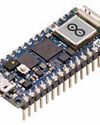Essayer OR - Gratuit
The Power of Open Source Generative AI and Large Language Models
Open Source For You
|April 2025
Open source large language models are at the forefront of the generative AI revolution. As these models become more powerful, efficient, and accessible, they will drive innovation across industries and improve everyday lives. However, addressing ethical concerns, ensuring fairness, and building sustainable AI systems will require collaboration and commitment from developers, researchers, and policymakers. Here's a quick look at the current landscape with respect to these technologies.

Generative AI has emerged as one of the most transformative technologies in recent years, dramatically reshaping industries and changing how businesses, developers, and individuals interact with machines. At the heart of generative AI is the large language model (LLM), which powers a wide range of applications, from content generation and chatbots to personalised virtual assistants, and even image and video creation. The rise of open source LLMs has further accelerated this revolution, making powerful AI tools more accessible to everyone, from individual developers to large enterprises.
In recent years, LLMs like GPT-3 and GPT-J have demonstrated the remarkable ability of AI systems to understand and generate human-like text, opening new possibilities for automation, creativity, and problem-solving. These models are capable of reading, understanding, and generating natural language at a level previously unimaginable, allowing for applications that were once limited to human expertise. Open source projects like Hugging Face Transformers, GPT-Neo, and Llama are breaking down the barriers to entry, allowing developers to fine-tune models for specific tasks, experiment with new applications, and contribute to the growing AI ecosystem.
What are LLMs and how do they work?
LLMs have been at the forefront of generative AI’s evolution, enabling machines to understand, process, and generate human-like text. These models are trained on massive datasets containing diverse text from the internet, allowing them to learn the intricacies of human language, including syntax, semantics, and context.
At their core, LLMs are neural networks trained to predict the next word or sequence of words in a text based on the context they’ve already seen. This ability to predict subsequent words allows LLMs to generate coherent, contextually accurate sentences, paragraphs, and even entire documents.
Cette histoire est tirée de l'édition April 2025 de Open Source For You.
Abonnez-vous à Magzter GOLD pour accéder à des milliers d'histoires premium sélectionnées et à plus de 9 000 magazines et journaux.
Déjà abonné ? Se connecter
PLUS D'HISTOIRES DE Open Source For You

Open Source For You
The Role of Open Source in Building Modern Data Infrastructure
It's no secret that open source is emerging as the backbone of modern data infrastructure. Here’s a list of the core open source technologies used to deploy this infrastructure, along with some real-world examples and a brief on why open source matters.
3 mins
December 2025

Open Source For You
The Whispering Machines: How Open Source is Bringing Intelligence to the Tiniest Devices
Built on open source frameworks, TinyML is enabling complex machine learning models to run on the microcontrollers embedded in connected devices, bringing artificial intelligence to the very edge of the network.
3 mins
December 2025

Open Source For You
Setting Up Snort to Secure Your Network
Snort is a popular, open source intrusion detection system that monitors traffic in real time to detect malware. Here’s a detailed explanation of how to set it up on Ubuntu and test it by generating traffic from another system.
7 mins
December 2025

Open Source For You
When AI Meets DevOps to Build Self-Healing Systems
Traditional DevOps, with its rule-based automation, is struggling to work effectively in today’s complex tech world. But when combined with AlOps, it can lead to IT systems that predict failures and solve issues without human intervention.
7 mins
December 2025

Open Source For You
How to Automate Java Code Modernisation
This short guide illustrates that automating Java code modernisation with Python and OpenAI API is not just possible-it's remarkably effective.
5 mins
December 2025

Open Source For You
The Quest to Build a Quantum Computer
The road to large-scale quantum computing is long and hard, with incremental advances paving the way. But the destination is in sight.
12 mins
December 2025

Open Source For You
Job Opportunities: What's Hot in the Cloud Space?
If there's one field that refuses to slow down, it's cloud computing. Even as automation and AI reshape roles, cloud adoption continues to surge. From startups deploying microservices overnight to enterprises migrating decades of legacy systems, cloud remains the engine of digital transformation. For professionals, this means one thing: skills that live in the cloud won't come down anytime soon.
2 mins
December 2025

Open Source For You
Securing Client Identity with Post-Quantum Cryptography
Here's a quick tutorial on how to build a secure, real world client-server model that establishes client identity by using CRYSTALS-Dilithium, a post-quantum cryptography algorithm.
3 mins
December 2025

Open Source For You
Unlocking the Power of Multi-Agent Solutions with the Microsoft Agentic Framework
The Microsoft Agentic Framework is rapidly emerging as a cornerstone for developers, architects, and technology leaders seeking to build dynamic, intelligent systems powered by multiple collaborating agents. In an era where automation, distributed intelligence, and adaptive software are increasingly vital, this framework offers robust tools and features to accelerate the design and deployment of agent-based solutions.
6 mins
December 2025

Open Source For You
Apache Iceberg and Trino: Powering Data Lakehouse Architecture
Apache Iceberg is a cornerstone of any open data lakehouse, providing the transactional foundation upon which highly scalable and flexible analytics can flourish. Along with Trino, it can be used to build a robust, scalable, and high-performance data lakehouse.
4 mins
December 2025
Listen
Translate
Change font size
